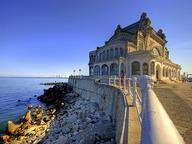Quiz Answer Key and Fun Facts
1. The most striking similarity between the two cities is the structure shown in the photo. What is the English translation of the name of this monument?
2. Paris' famous museum, the Louvre, is housed within a former palace. Is the National Museum of Art of Romania also located within a palace?
3. The River Seine flows through Paris, but which of these rivers flows through the Romanian capital?
4. Like Paris, Bucharest is also home to many parks. Which one of these contains "The Monument of French Heroes" to honour French soldiers who lost their lives in the Romanian Campaign of World War I?
5. Bucharest's Bulevardul Unirii ("Union Boulevard") was built to rival Paris' famed Champs-Élysées. Which natural calamity befell Bucharest in 1977 causing the civic centre to be rebuilt and led to the construction of the Bulevardul Unirii?
6. Paris is famous for its many churches, most of which belong to the Roman Catholic denomination. Bucharest is home to the seat of the Patriarch of which of these denominations?
7. Paris' Palais Garnier is one of the most famous opera houses in the world. Which of these concert halls is located in Bucharest?
8. The CEC Palace was designed by Paul Gottereau, a graduate from Paris' École des Beaux-Arts. What kind of establishment was the structure built to house?
9. The streets of Paris were bloodied during the French Revolution in the 18th century. In which year did Bucharest witness the Romanian Revolution?
10. No tourist's trip to Paris would be complete without a visit to the Palace of Versailles. Was Bucharest's Palace of the Parliament built as a residence for the Romanian royal family?
Source: Author
zorba_scank
This quiz was reviewed by FunTrivia editor
agony before going online.
Any errors found in FunTrivia content are routinely corrected through our feedback system.
